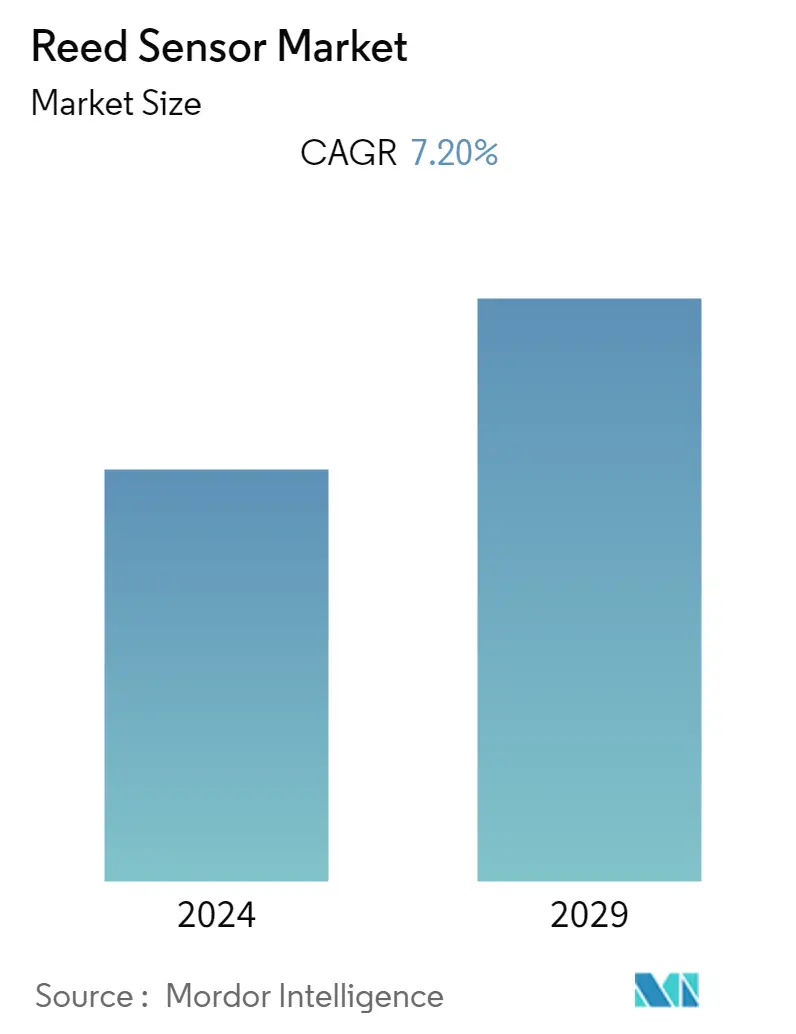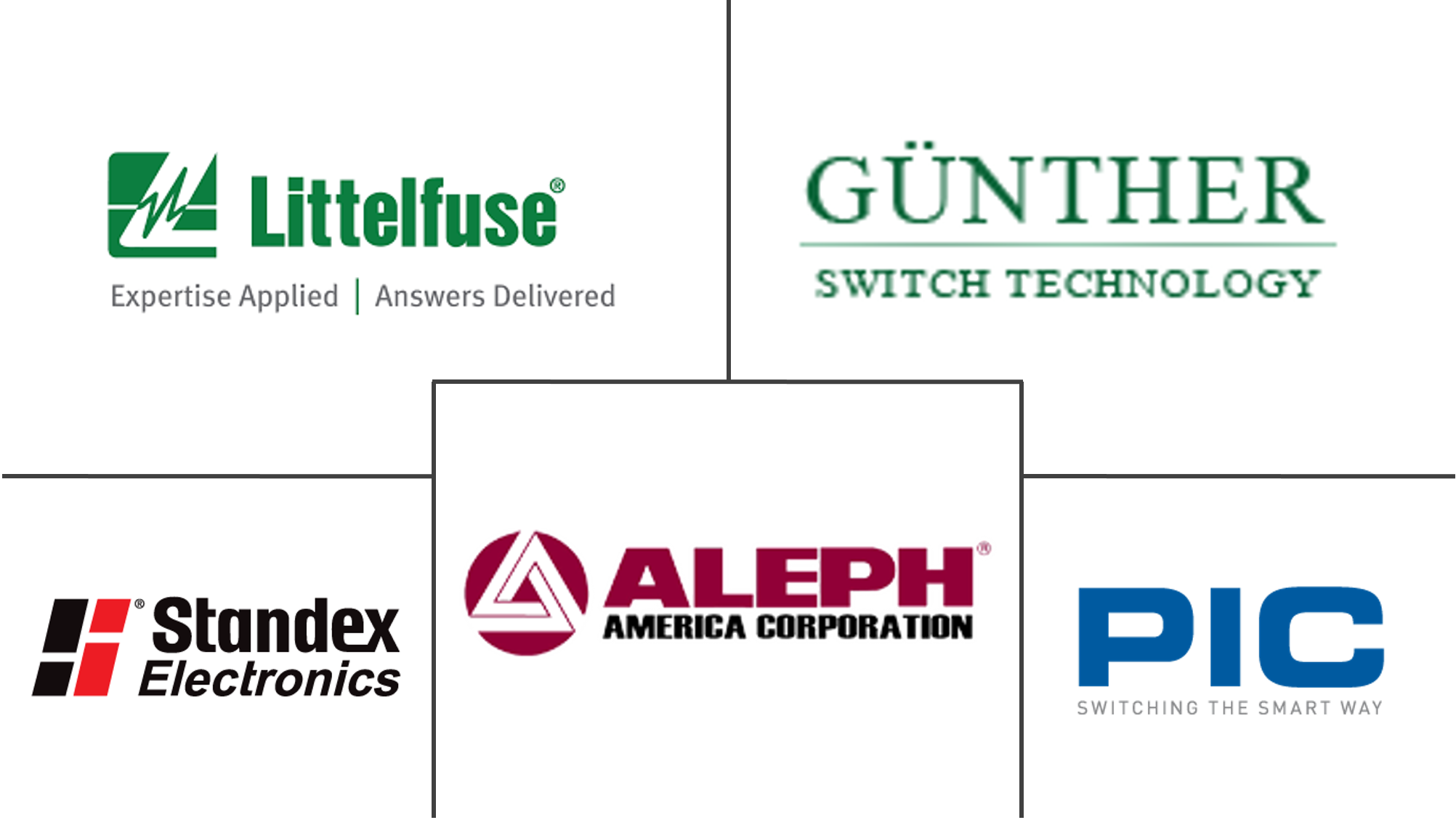Market Size of Reed Sensor Industry

| Study Period | 2019 - 2029 |
| Base Year For Estimation | 2023 |
| CAGR | 7.20 % |
| Fastest Growing Market | Asia Pacific |
| Largest Market | North America |
| Market Concentration | Medium |
Major Players
*Disclaimer: Major Players sorted in no particular order |
Need a report that reflects how COVID-19 has impacted this market and its growth?
Reed Sensor Market Analysis
The reed sensor market is anticipated to grow at a CAGR of 7.2% from the year (2021 - 2026). Due to technological advancements in the sensor and switch technology, there is a trend towards high miniaturization and highly reliable reed switches are acting as a driver for the reed sensor in various end-user industries.
- Adoption in low power metering applications and capable of working in harsh environments drives the market, in products such as electricity meters, heat meters, etc. For instance, gas and water meters suitable with automatic meter reading systems need sensors that use very little power consumption. Water and gas usage is generally measured by a magnet attached to a rotating shaft where each revolution is converted into an electrical signal and accumulated by an embedded controller. Low power consumption is a critical design parameter in these systems by which reed sensors embedded with reed switch are in demand in these applications.
- The increase in industrial automation and the boom of Industrial 4.0 will lead to the adoption of reed sensor market. According to IFR, till 2022, there will be around 630,000 robots unit shipments globally. New technology and global standards ensure a safe workplace, boost productivity, and reduce environmental impact. Every hydraulic or pneumatic cylinder or actuator involves a reed sensor for end position sensing. Unlike inductive sensors or Hall-effect sensors, these sensors use no power and have good isolation. They have high operating speeds, work with a wide range of voltages of programmable logic controllers (PLCs) and micro-controllers, which enhances productivity.
- Reliability and durability challenges the reed switch which restraints the market for reed sensor. Reed switches have several inherent disadvantages, which includes susceptibility to breakage issues during installation, propensity to shock or vibration applications, lower durability, limited life due to the mechanical nature of the switch, as well as issues due to the contact bounce.
